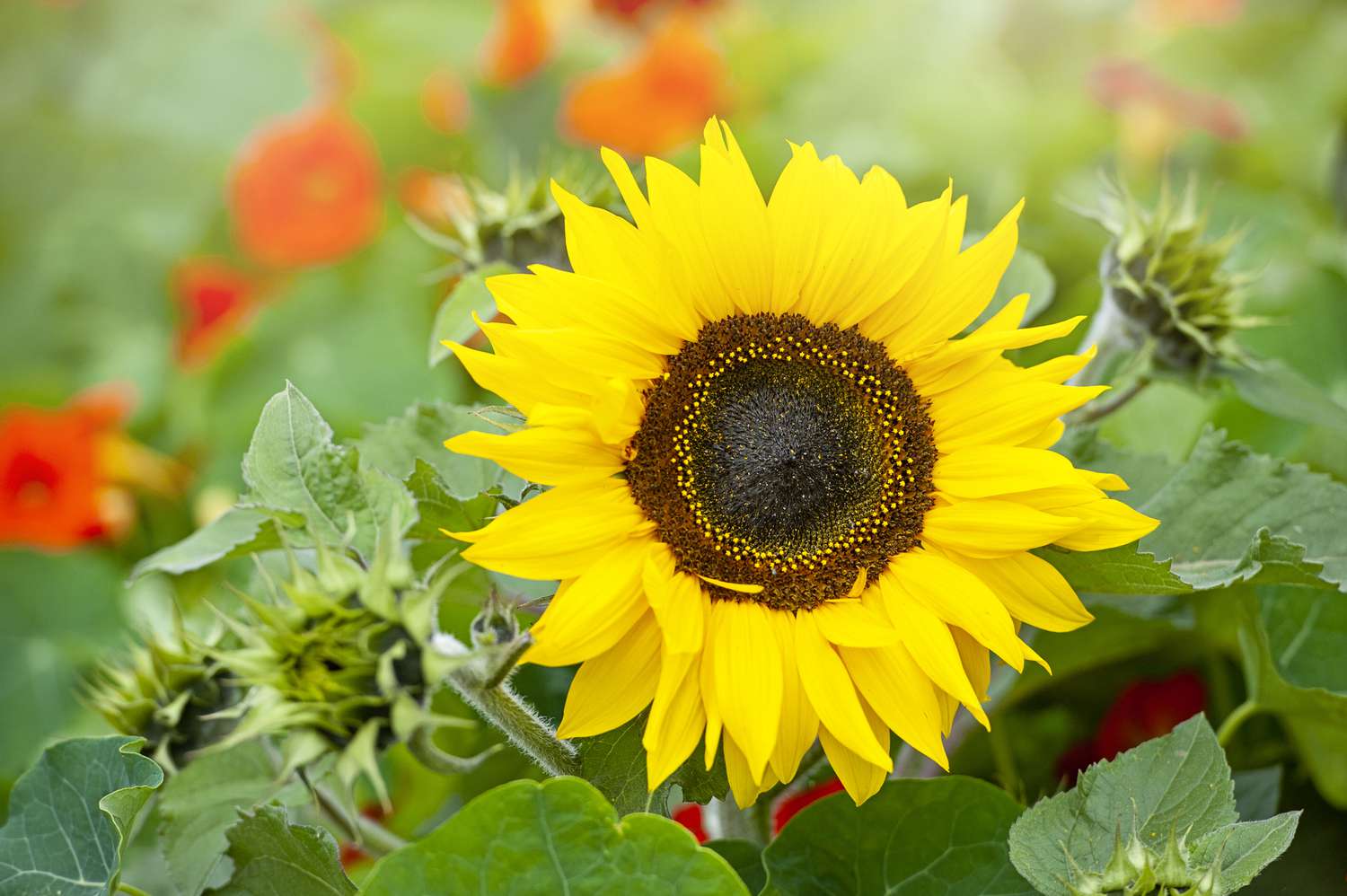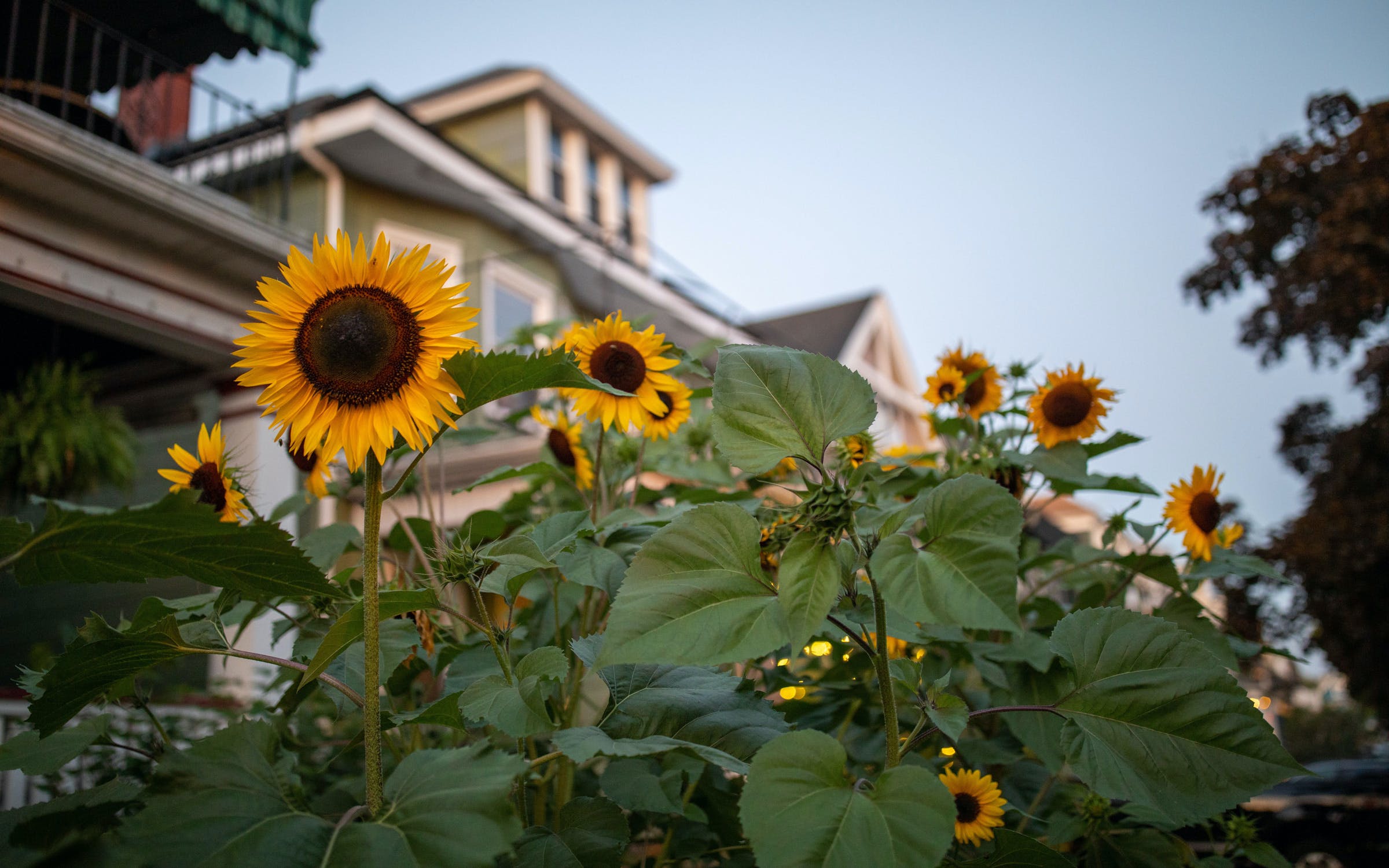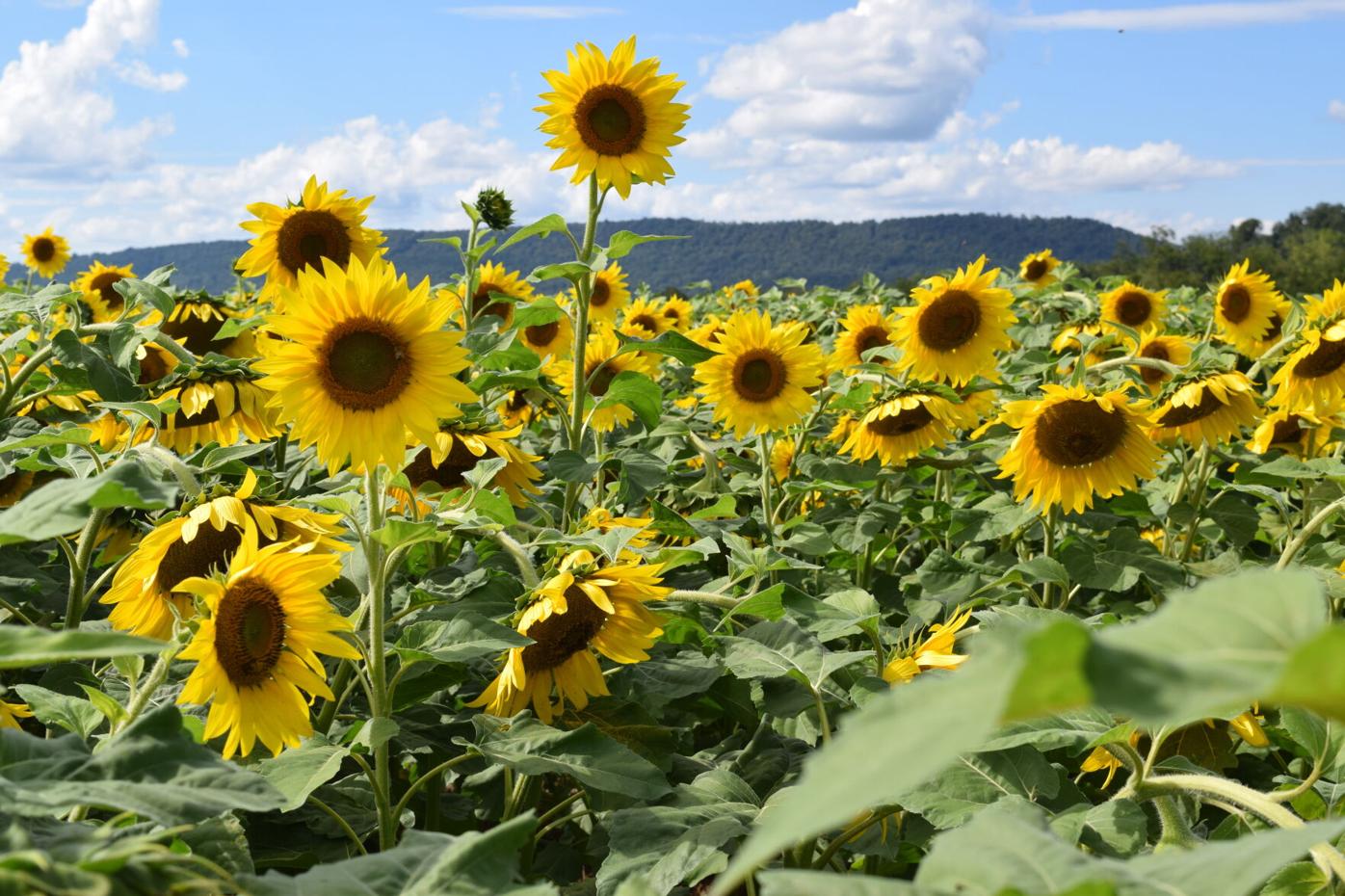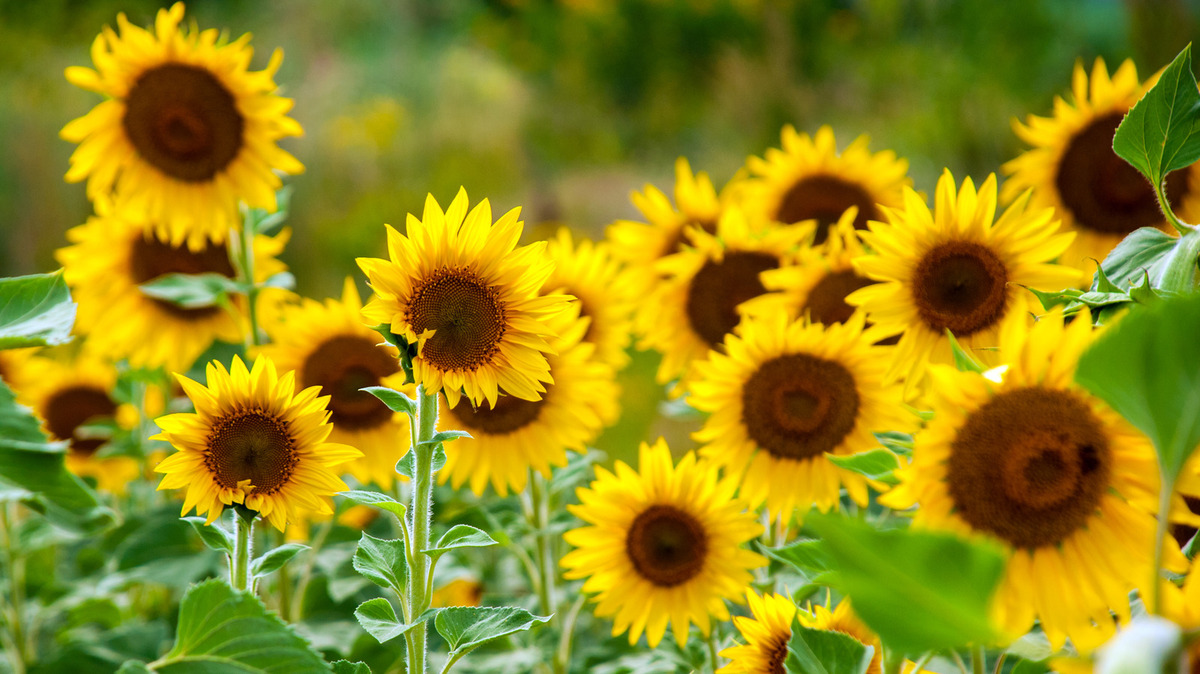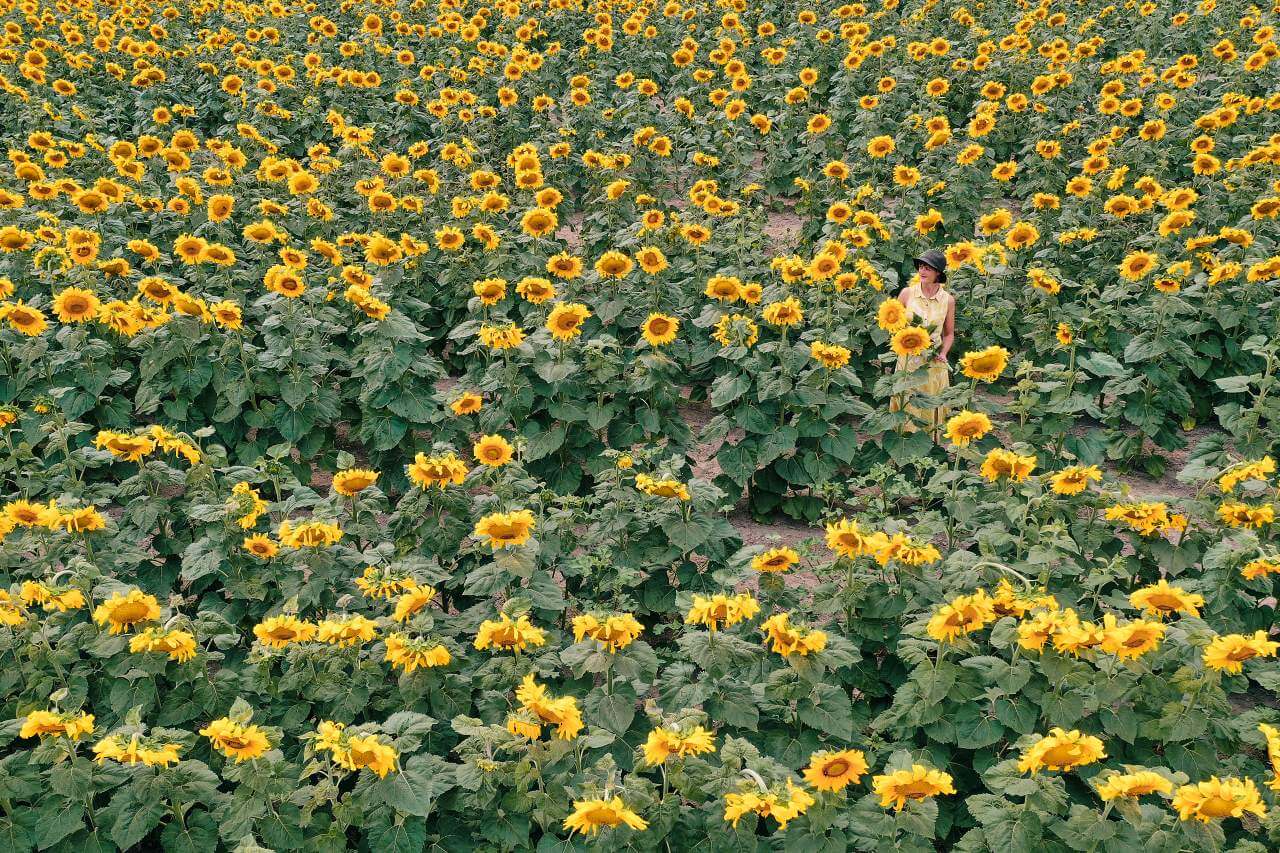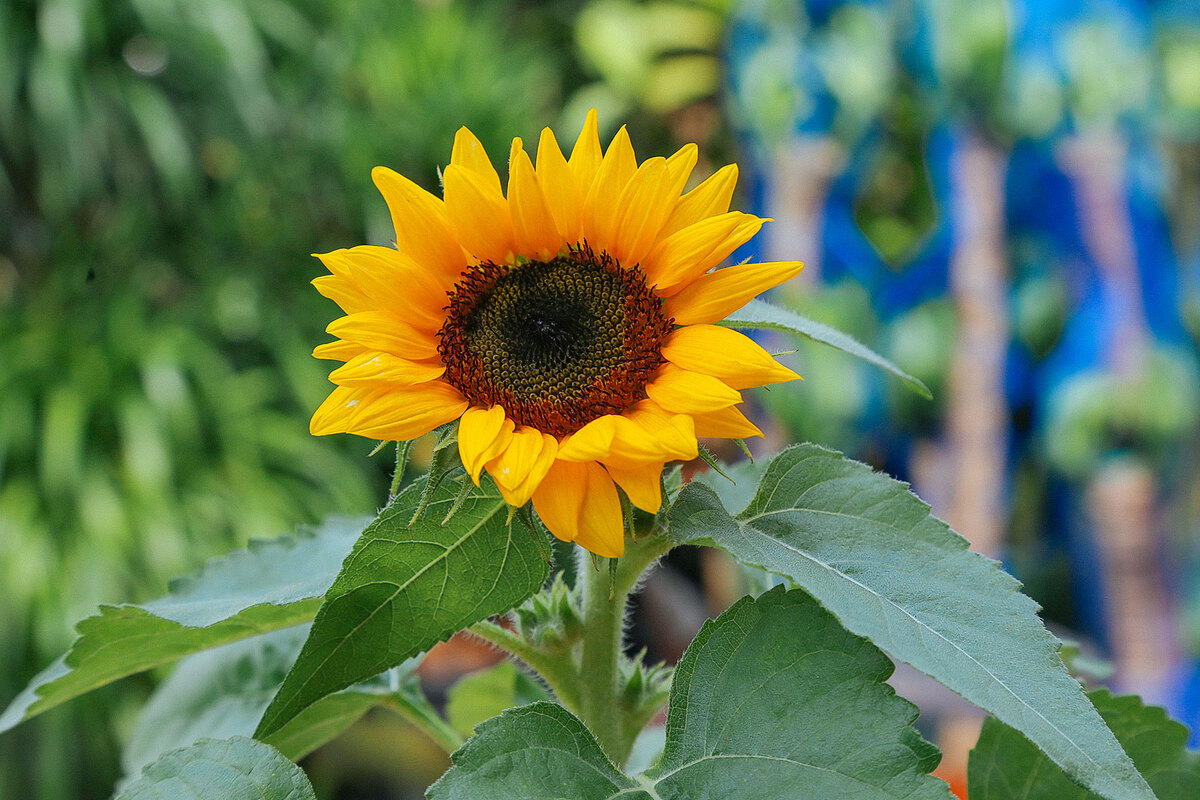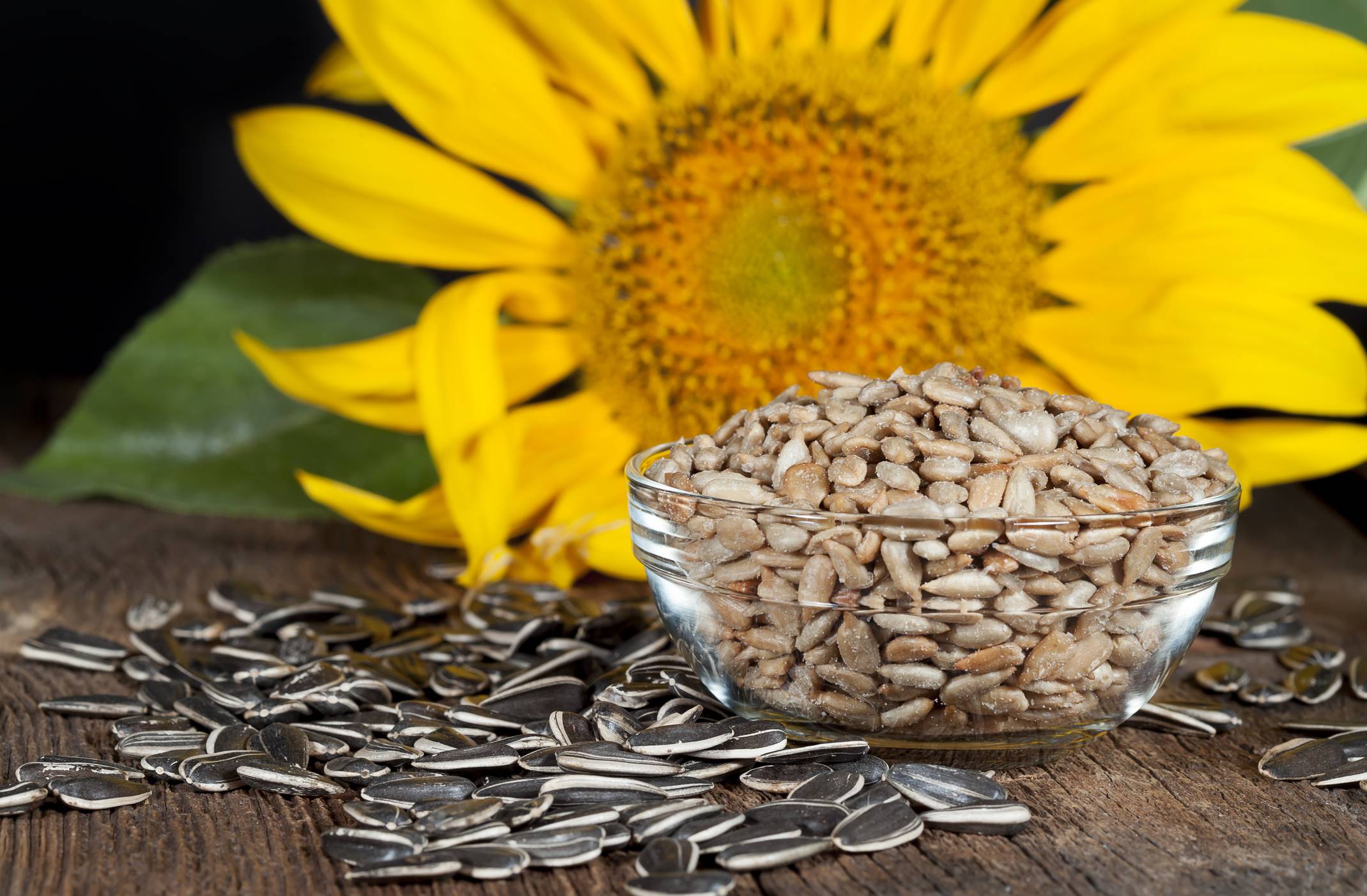Home>Types of Gardening>Ornamental Gardening>When To Plant Sunflowers In Illinois
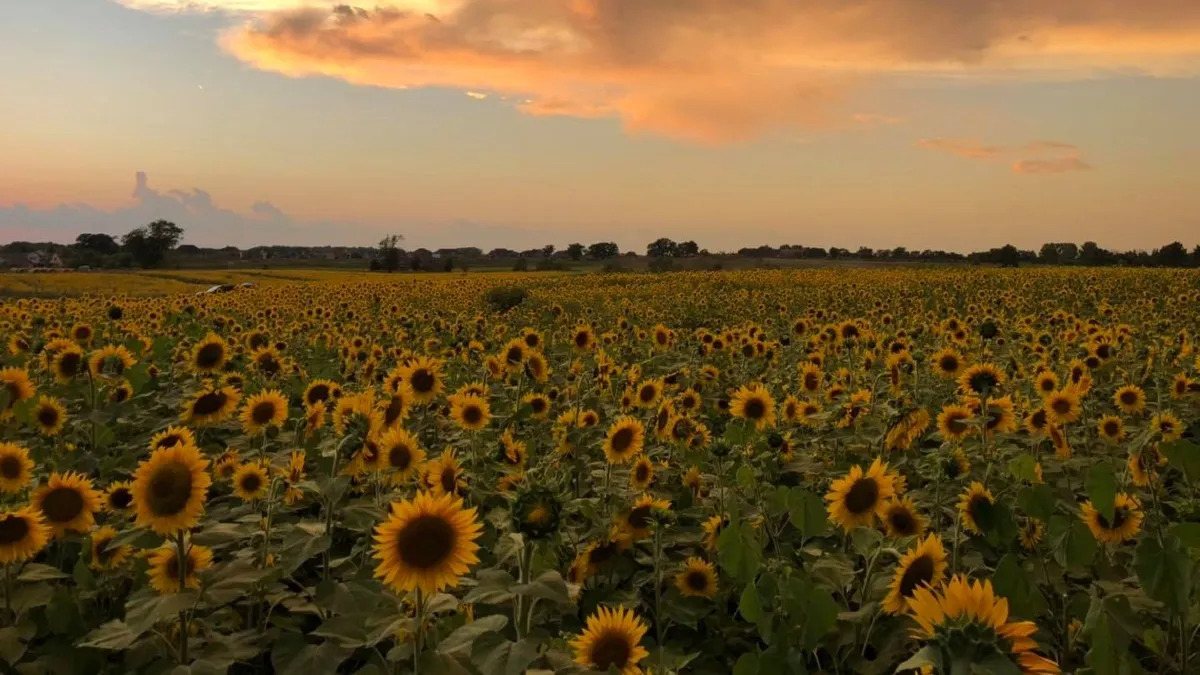

Ornamental Gardening
When To Plant Sunflowers In Illinois
Modified: January 22, 2024
Learn the best time to plant sunflowers in Illinois for a vibrant and colorful ornamental garden. Get expert tips and advice for successful ornamental gardening.
(Many of the links in this article redirect to a specific reviewed product. Your purchase of these products through affiliate links helps to generate commission for Chicagolandgardening.com, at no extra cost. Learn more)
Table of Contents
Introduction
Welcome to the world of ornamental gardening, where beauty and creativity collide to create stunning outdoor spaces. Ornamental gardening is the art of designing and cultivating plants for their aesthetic appeal. One of the most popular and visually striking plants in ornamental gardening is the sunflower. With its vibrant yellow petals and towering height, sunflowers are a true showstopper in any garden or landscape.
And if you are a gardening enthusiast in Illinois, you are in for a treat! Illinois provides an ideal environment for growing sunflowers, thanks to its diverse climate and fertile soil. Whether you have a small backyard, a sprawling garden, or even a balcony, you can easily incorporate sunflowers into your ornamental gardening plans.
But before you embark on your sunflower-growing journey, it’s important to understand the specific conditions and requirements for successful cultivation. In this article, we will explore the optimal time to plant sunflowers in Illinois, the varieties that thrive in the region, and essential tips for soil preparation, planting, care, and maintenance.
So, whether you’re a seasoned gardener or a beginner looking to add some charm to your outdoor space, get ready to dive into the world of sunflowers and discover the joy of growing these magnificent blooms.
Climate and Growing Zone in Illinois
Illinois is known for its diverse climate, with hot summers and cold winters. The state falls within the USDA Hardiness Zones 5 and 6, which means it experiences a wide range of temperatures that can impact plant growth. Understanding the climate and growing zones in Illinois is crucial for determining the best time to plant sunflowers.
During the summer months, Illinois can experience average high temperatures ranging from 80 to 90 degrees Fahrenheit (27 to 32 degrees Celsius), while the winter months can see lows ranging from 15 to 30 degrees Fahrenheit (-9 to -1 degrees Celsius).
It’s important to note that sunflowers thrive in abundant sunlight and warm temperatures. Ideally, they require temperatures between 70 to 78 degrees Fahrenheit (21 to 26 degrees Celsius) to germinate and grow successfully. Therefore, the climate in Illinois during the summer months provides the perfect conditions for sunflowers to flourish.
Another factor to consider is the average rainfall in Illinois. Sunflowers require a moderate amount of water to grow efficiently. In Illinois, the average annual rainfall ranges from 35 to 45 inches, providing sufficient hydration for the plants.
Additionally, the soil in Illinois is predominantly rich in nutrients, making it highly fertile. Its composition plays a significant role in the successful cultivation of sunflowers. The optimal soil pH for sunflowers is between 6.0 and 7.5, slightly acidic to neutral. The fertile soil in Illinois, combined with regular rainfall, creates an ideal environment for sunflowers to thrive.
By considering the climate and growing conditions in Illinois, you can select the appropriate sunflower varieties and plan your planting accordingly to ensure a successful and bountiful yield.
Sunflower Varieties Suitable for Illinois
When it comes to choosing sunflower varieties for your Illinois garden, you have an array of options to consider. Each variety offers unique characteristics, such as different flower colors, sizes, and growth habits. Here are some sunflower varieties that are well-suited for the climate and growing conditions in Illinois:
- Autumn Beauty: This variety boasts a mix of vibrant colors, including reds, oranges, and yellows. Autumn Beauty sunflowers are known for their multiple blooms and make a stunning addition to any garden.
- Mammoth Sunflower: As the name suggests, Mammoth sunflowers are known for their impressive height, reaching up to 12 feet (3.7 meters) tall. They produce large, striking blooms that can span up to 12 inches (30 centimeters) in diameter.
- Lemon Queen: For a touch of elegance, Lemon Queen sunflowers are a popular choice. They feature beautiful pale yellow petals and can grow up to 6 feet (1.8 meters) in height.
- Italian White: If you prefer a unique and delicate look, Italian White sunflowers are an excellent choice. With their creamy white petals and dark centers, they add a touch of sophistication to any garden.
- Velvet Queen: With its deep burgundy petals, Velvet Queen sunflowers are a captivating sight. They are sure to make a bold statement in your garden and attract attention from both humans and pollinators.
When selecting sunflower varieties, consider factors like the height, color, and growing habit that best suit your garden design and personal preferences. Additionally, you can choose between annual and perennial varieties. Annual sunflowers complete their life cycle in one growing season, while perennial sunflowers can come back year after year with proper care.
Keep in mind that sunflowers are also favored by pollinators like bees and butterflies, so choosing a variety that attracts beneficial insects can have a positive impact on your garden’s ecosystem.
By selecting the right sunflower varieties for your garden, you can create a visually stunning display and enjoy the beauty of these vibrant flowers throughout the growing season.
Soil Preparation and Planting Guidelines
Proper soil preparation is key to ensuring healthy sunflower growth and maximizing their potential in your Illinois garden. Follow these soil preparation and planting guidelines to set your sunflowers up for success:
- Choose a sunny location: Sunflowers love full sun exposure, so select a planting spot that receives at least six to eight hours of direct sunlight each day.
- Clear the area: Remove any weeds, rocks, or debris from the planting area. This will prevent competition for nutrients and ensure optimal growing conditions for your sunflowers.
- Loosen the soil: Use a garden fork or tiller to loosen the soil to a depth of 12 to 15 inches (30 to 38 centimeters). This will improve drainage and allow the sunflower roots to penetrate the soil easily.
- Amend the soil: Add organic matter, such as compost or well-rotted manure, to enrich the soil with nutrients. This will help support healthy sunflower growth and development.
- Test the soil pH: Sunflowers prefer slightly acidic to neutral soil with a pH range of 6.0 to 7.5. Use a soil testing kit to determine the pH level, and make any necessary adjustments by adding amendments accordingly.
- Plant the seeds: Dig holes that are about 1 to 2 inches (2.5 to 5 centimeters) deep and spaced roughly 6 to 12 inches (15 to 30 centimeters) apart, depending on the sunflower variety. Drop one or two seeds into each hole and cover them with soil.
- Water thoroughly: Give the newly planted seeds a good watering to ensure the soil is moist. Continue to water regularly, keeping the soil evenly moist, but not waterlogged, throughout the growing season.
- Provide support (optional): If you are growing tall varieties or live in a windy area, consider providing support for your sunflowers. Placing stakes or using a trellis can help prevent them from toppling over.
Remember to follow the specific instructions on the seed packets for planting depth and spacing, as it may vary depending on the sunflower variety. Additionally, consider incorporating organic mulch around the base of the plants to help retain moisture and prevent weed growth.
By properly preparing the soil and following these planting guidelines, you can create the ideal growing environment for your sunflowers and set them on the path to flourishing.
Best Time to Plant Sunflowers in Illinois
Timing is crucial when it comes to planting sunflowers in Illinois. Although sunflowers are a hardy plant, ensuring they are planted at the right time will optimize their growth and flowering. The best time to plant sunflowers in Illinois is typically in late spring or early summer, after the danger of frost has passed.
As a general guideline, aim to plant sunflower seeds when the soil temperature has reached around 50 to 55 degrees Fahrenheit (10 to 13 degrees Celsius). This usually coincides with daytime temperatures consistently staying above 60 degrees Fahrenheit (15 degrees Celsius).
In Illinois, this temperature range is typically achieved in late April through May, depending on the region and local conditions. It’s important to check the local weather forecast and soil temperature before planting to ensure optimal conditions.
Sunflowers are relatively fast-growing plants, and they thrive in warm weather. Planting them too early in cold soil may lead to poor germination, stunted growth, or even seed rot. On the other hand, planting them too late in the summer may result in shorter growing periods and smaller blooms.
By planting sunflowers at the appropriate time in Illinois, you can take advantage of the warm summer months and give your sunflowers the best chance to reach their full potential.
Sunflower Care and Maintenance
Once you’ve planted your sunflowers, proper care and maintenance are essential for their health and vitality. Here are some important tips to help you nurture your sunflowers throughout the growing season:
- Watering: Sunflowers require regular watering, especially during dry spells. Aim to keep the soil consistently moist but not waterlogged. Water at the base of the plants, avoiding wetting the leaves, to reduce the risk of diseases.
- Fertilizing: Sunflowers are generally low-maintenance plants, but they can benefit from a balanced fertilizer application during the growing season. Apply a slow-release fertilizer or organic compost around the base of the plants to provide the necessary nutrients.
- Weeding: Regular weeding is crucial to minimize competition for nutrients and ensure optimal growth for your sunflowers. Remove any weeds that appear around the base of the plants, taking care not to disturb the sunflower roots.
- Staking: Depending on the sunflower variety and your location, tall varieties may require staking to provide support against strong winds. Insert sturdy stakes into the ground near the plants and gently tie the sunflower stems to the stakes using gardening twine.
- Pruning: While sunflowers don’t require extensive pruning, you can remove any damaged or diseased leaves or flowers to maintain the plant’s health and appearance. Additionally, you may choose to deadhead the spent blooms to encourage continuous flowering.
- Pest and disease control: Keep an eye out for common pests like aphids or caterpillars. If necessary, use organic pest control methods or insecticidal soap to deter or eliminate pests. Also, monitor the plants for signs of diseases such as powdery mildew, and promptly address any issues to prevent further damage.
- Support pollinators: Sunflowers are known for attracting beneficial insects such as bees and butterflies. Ensure a diverse and thriving garden ecosystem by providing other nectar-rich flowers nearby to support these pollinators.
Regular observation and care will help you identify any issues early on and take appropriate action to ensure healthy and vibrant sunflowers in your Illinois garden. Enjoy watching these magnificent flowers grow and brighten your outdoor space throughout the season.
Harvesting and Storing Sunflower Seeds
As the summer comes to an end, it’s time to harvest your sunflowers and reap the rewards of your efforts. The process of harvesting sunflower seeds is both rewarding and simple, and it allows you to enjoy these nutritious and delicious treats. Here are some tips on how to harvest and store sunflower seeds:
- Observing seed maturity: Sunflower seeds are ready for harvest when the back of the flower head turns brown or yellow and the seeds begin to loosen and darken. The petals will also start to wither and fall off.
- Protecting the seeds: As the flowers mature, cover them with a loose paper bag or fabric to protect the developing seeds from birds and squirrels. This will ensure a bountiful harvest.
- Harvesting the flower heads: Once the seeds are fully developed, cut the flower heads from the stalk using pruning shears or a sharp knife. Leave a few inches of stem attached to each flower head.
- Drying the flower heads: Place the harvested flower heads in a warm, well-ventilated area to dry. Hanging them upside down or spreading them out on a clean surface will help facilitate drying. Allow the flower heads to dry for about two to four weeks or until the seeds are completely dry.
- Removing the seeds: Once the flower heads are dry, gently rub or strip the seeds from the seed head using your hands or a clean cloth. You can also use a fork to separate the seeds from the flower head.
- Storing the seeds: Ensure the harvested seeds are fully dry before storing them to prevent mold or spoilage. Store the seeds in airtight containers such as glass jars or resealable bags. Keep them in a cool, dry, and dark place like a pantry or cellar.
- Enjoying your harvest: Sunflower seeds can be delicious snacks on their own or added to various dishes like salads, baked goods, or trail mixes. Roasting the seeds in the oven with a sprinkle of salt or other seasonings can enhance their flavor.
- Saving seeds for next season: If you want to save seeds for the following growing season, ensure they are fully dry and then store them in a labeled envelope or container. Keep them in a cool, dry place until planting time.
By following these tips, you can successfully harvest and store sunflower seeds to enjoy as a nutritious snack or save for future planting. It’s a gratifying experience that allows you to fully appreciate the cycle of nature and your gardening efforts.
Conclusion
Ornamental gardening in Illinois offers a wonderful opportunity to bring beauty and vibrancy to your outdoor spaces, and sunflowers are a perfect choice for adding a touch of natural splendor. With their bright colors and impressive height, sunflowers are sure to captivate the hearts of both gardeners and onlookers.
In this article, we explored the climate and growing zones in Illinois, highlighting how they provide an ideal environment for sunflower cultivation. We also discussed the various sunflower varieties that thrive in Illinois, each offering its own unique charm and beauty.
Soil preparation and planting guidelines play a crucial role in ensuring the success of your sunflowers. By carefully selecting an appropriate location, preparing the soil, and following proper planting techniques, you can create an optimal growing environment for your sunflowers to thrive.
We also delved into the best time to plant sunflowers in Illinois, emphasizing the importance of waiting until the soil has warmed up to ensure successful germination and growth. Additionally, we touched upon the essential care and maintenance practices that will keep your sunflowers healthy throughout the growing season.
As summer draws to a close, the joy of harvesting sunflower seeds allows you to fully enjoy the fruits of your labor. We provided tips on how to harvest and store sunflower seeds, ensuring you have a bountiful supply for snacking or future planting.
With a little patience, care, and attention, you can create a stunning sunflower display in your Illinois garden. So, embrace the beauty of ornamental gardening, and let the vibrant sunflowers brighten your outdoor space and bring joy to your heart.
